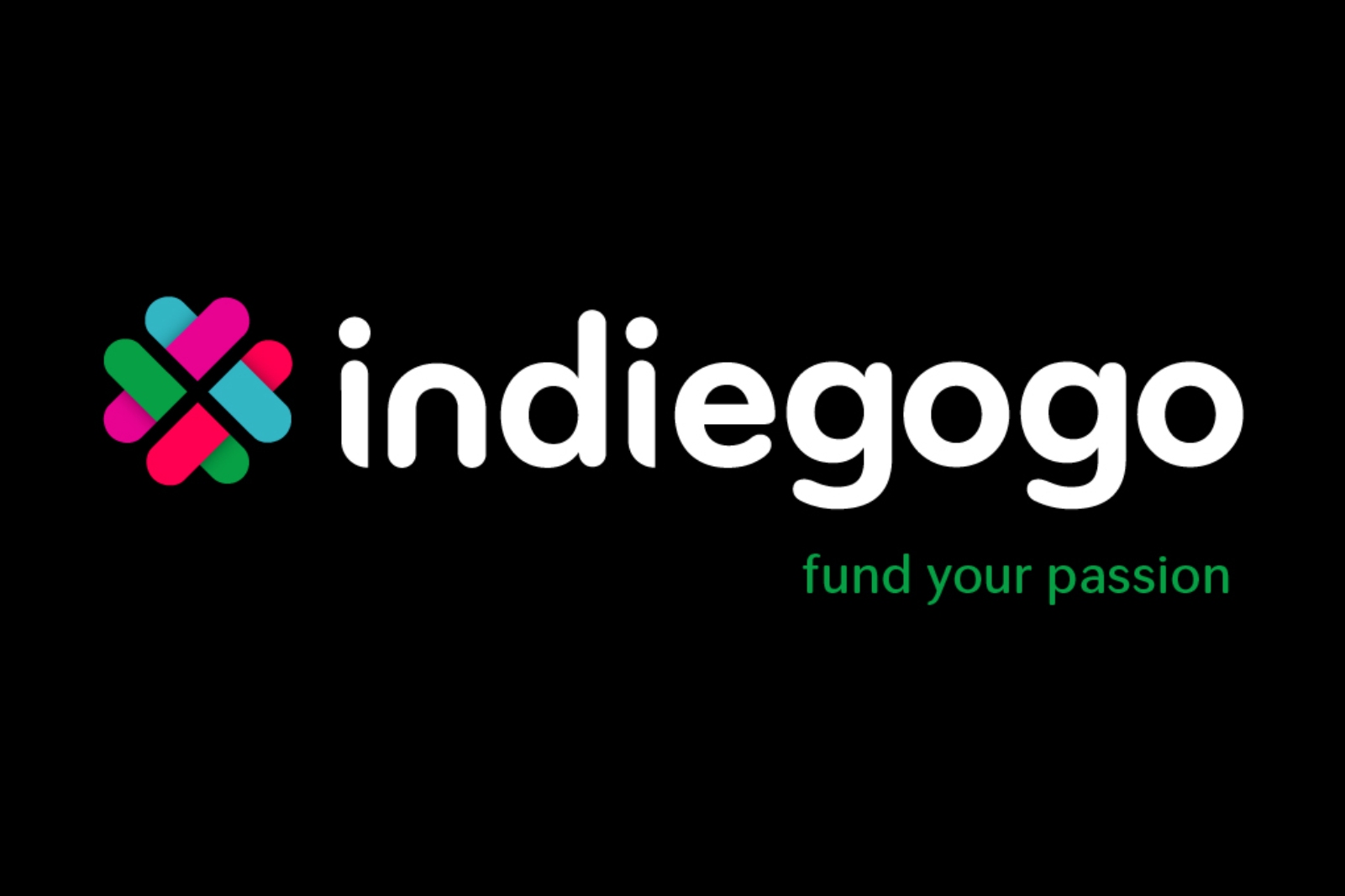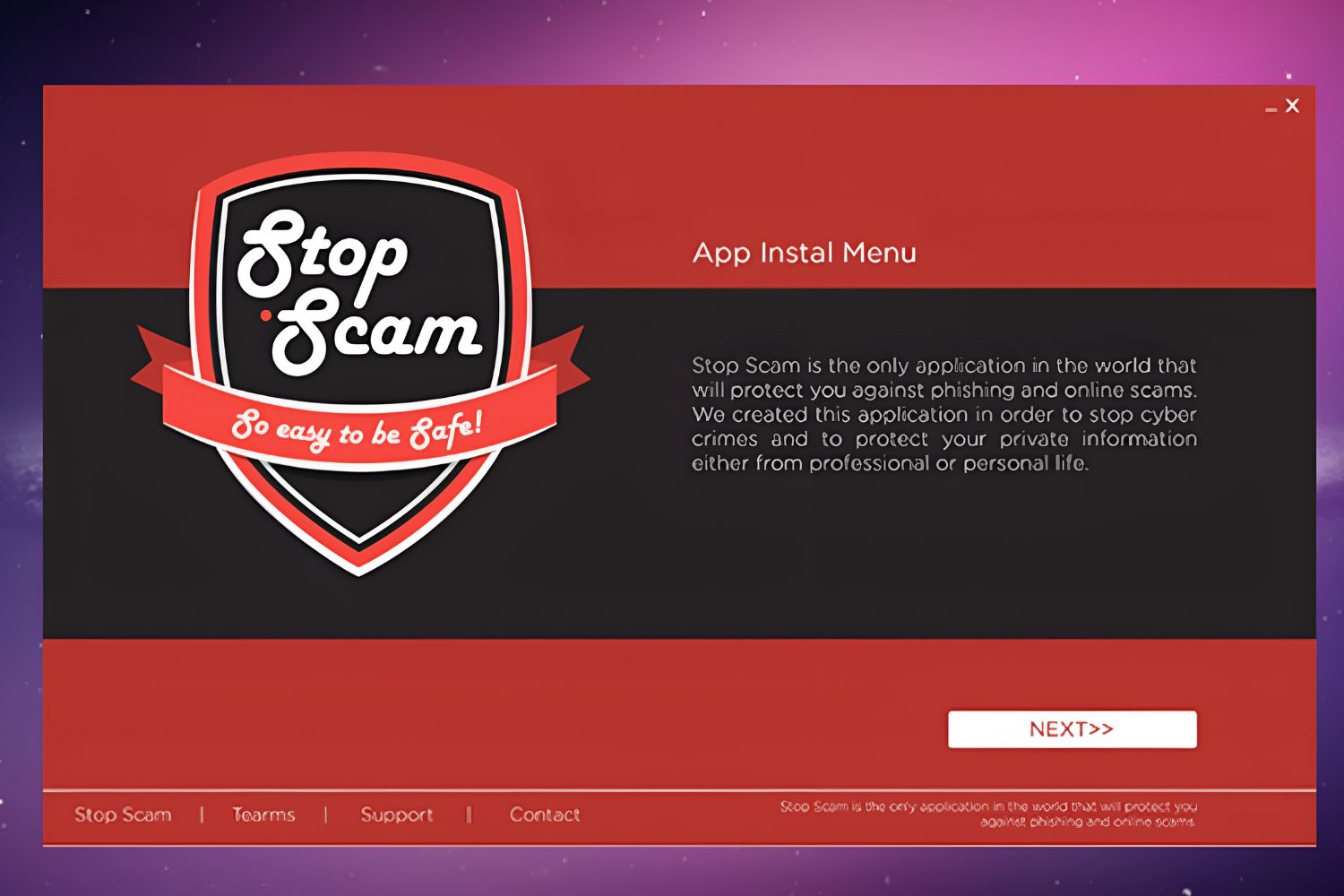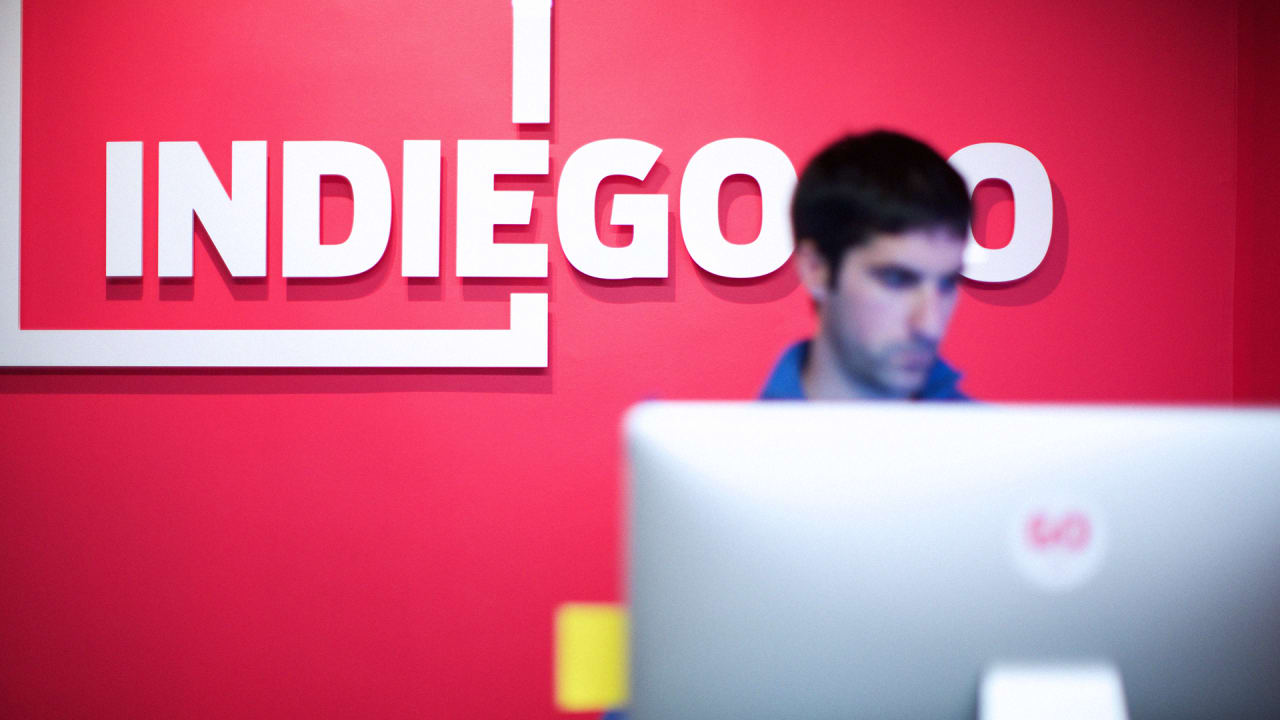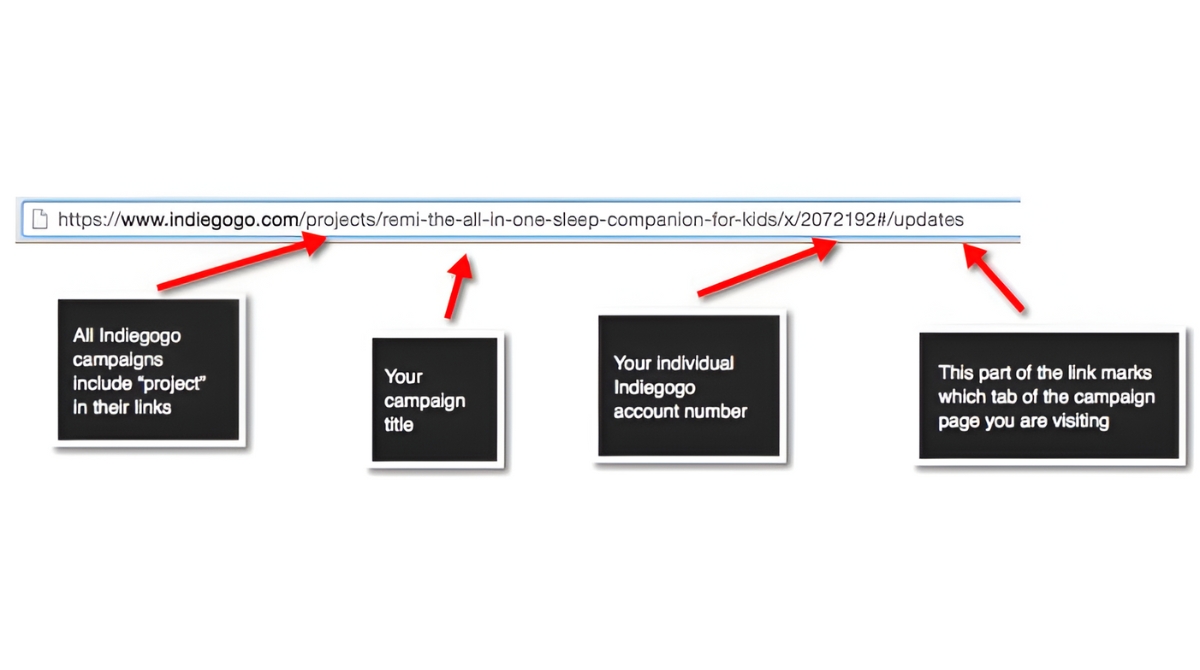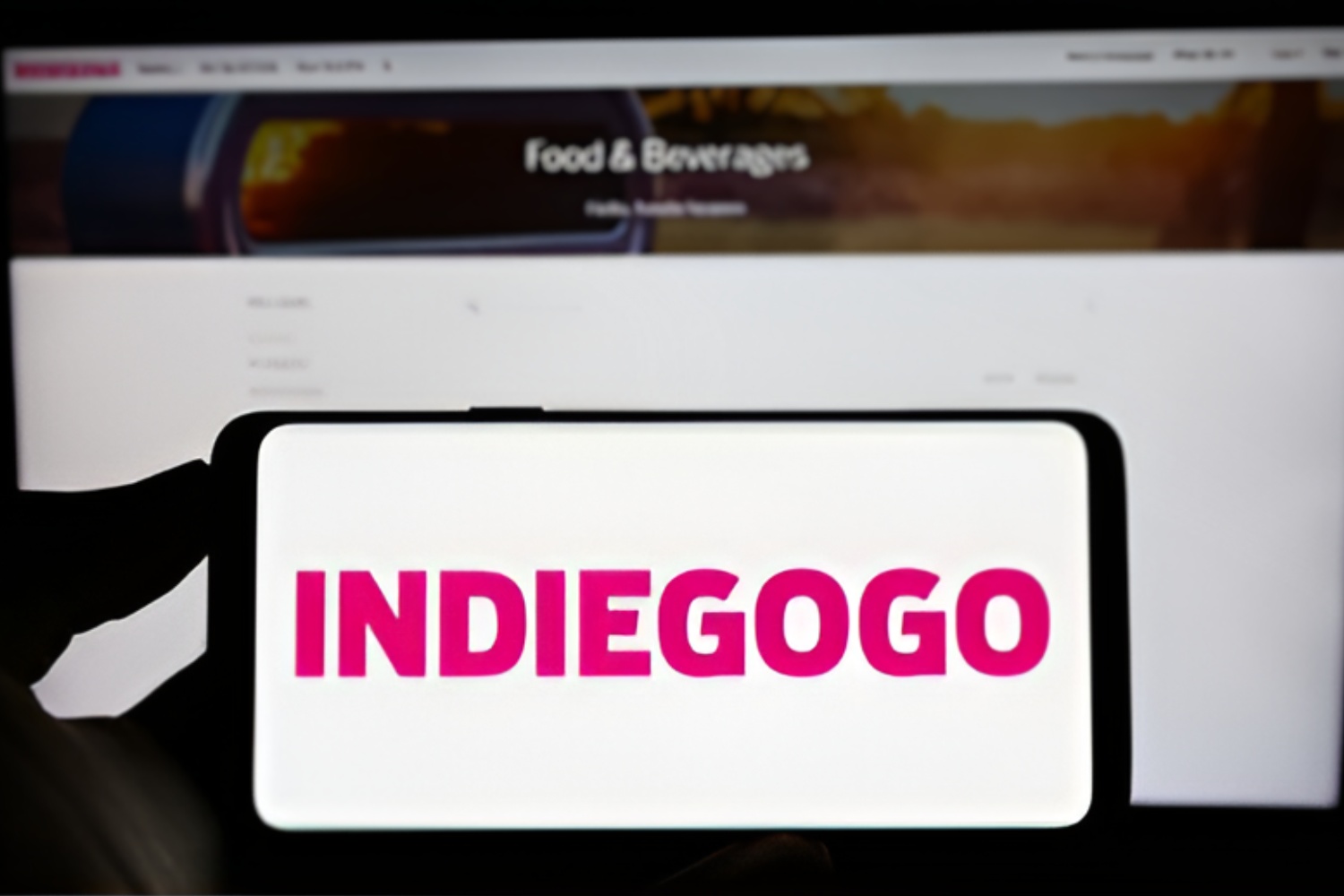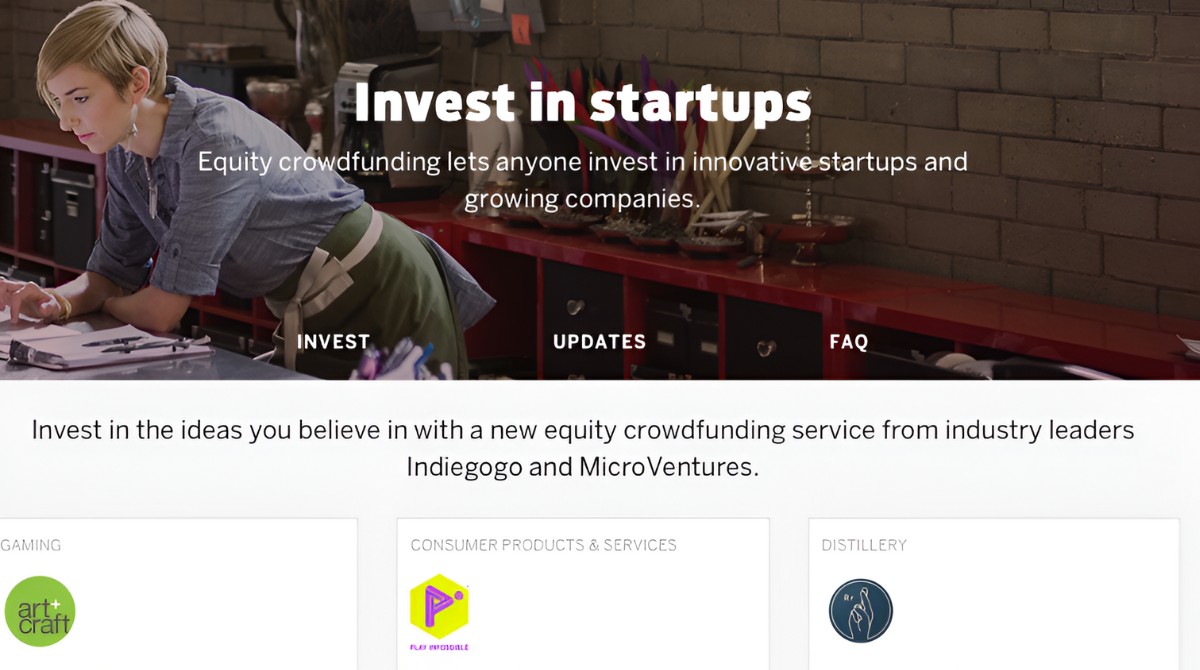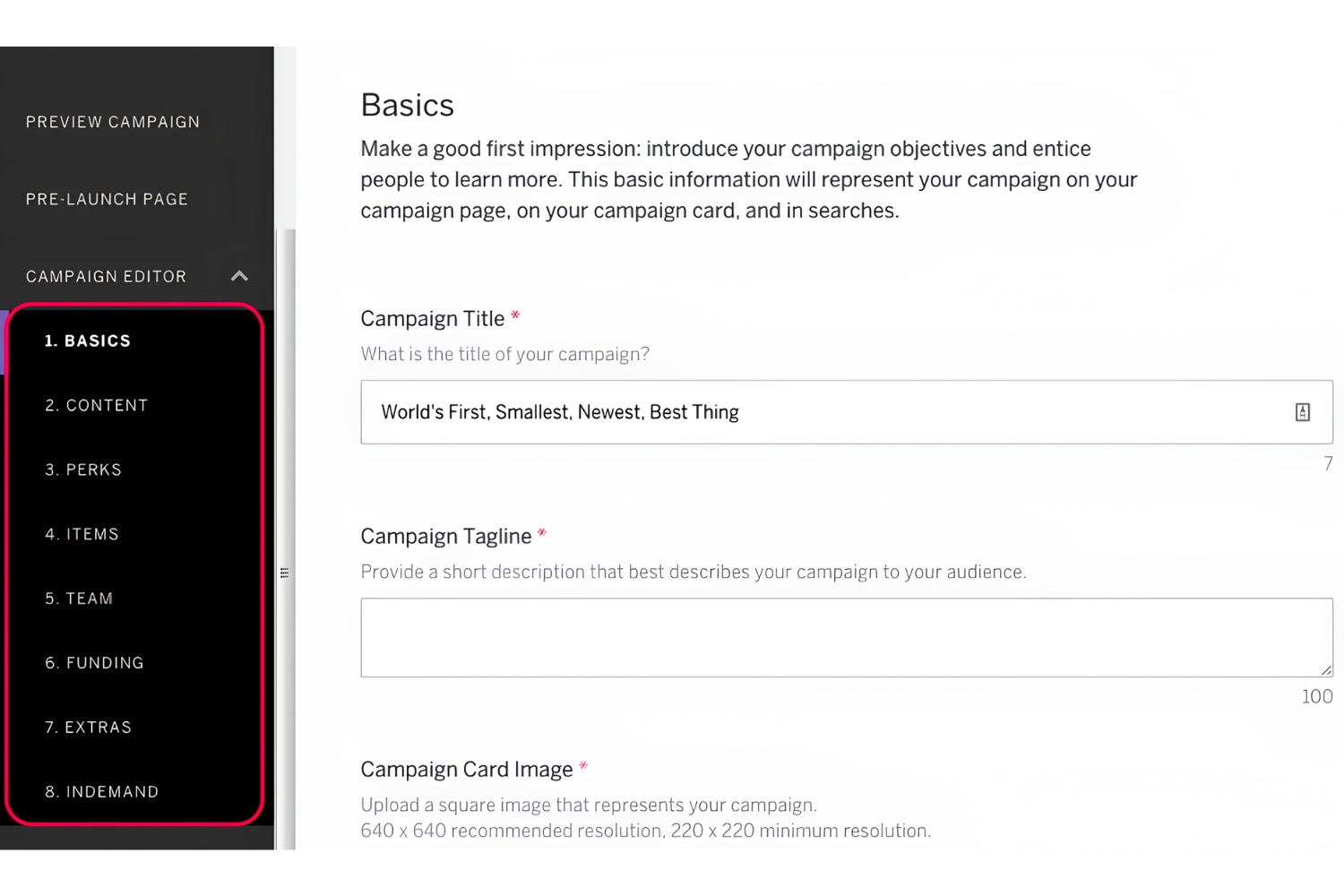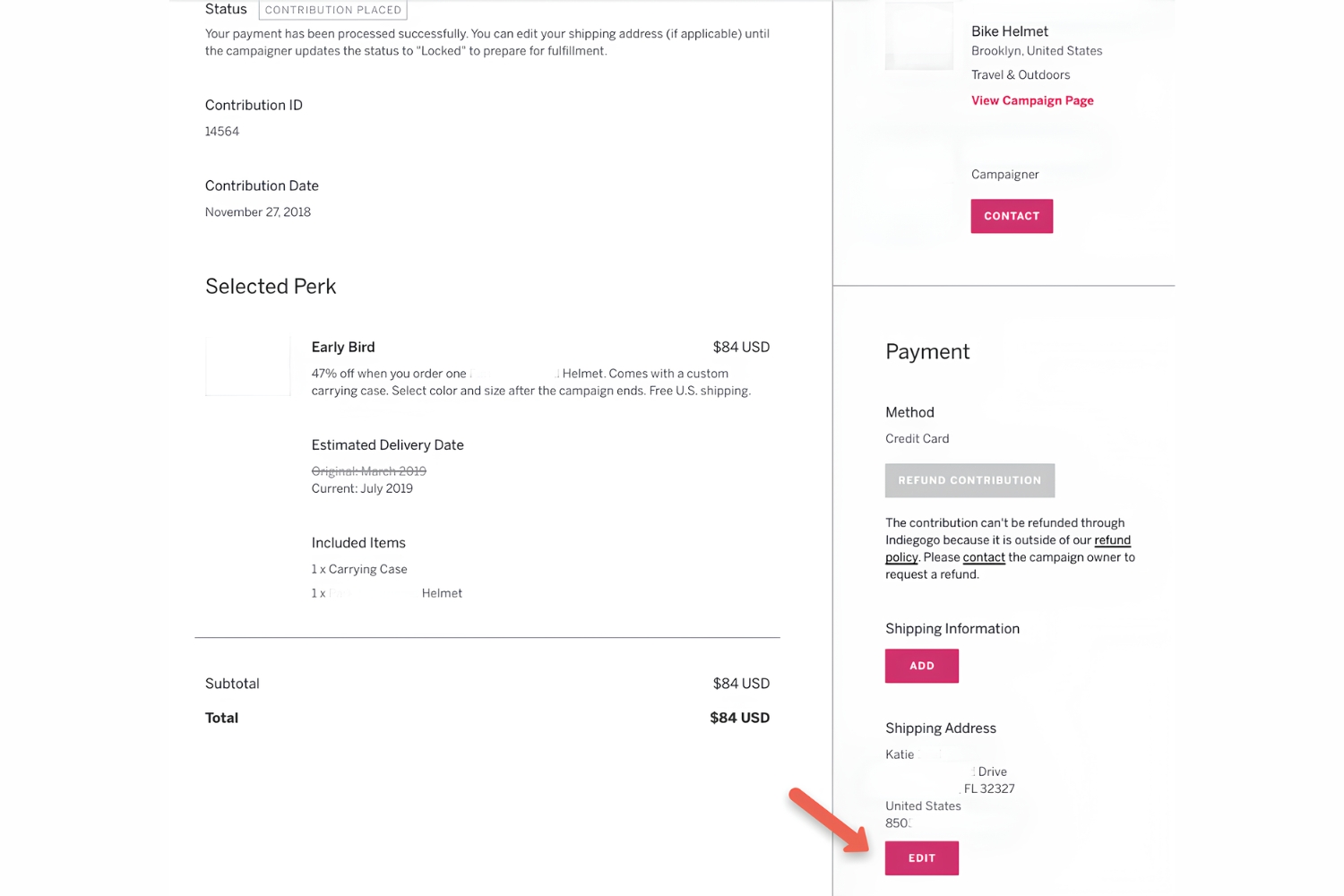Introduction
Indiegogo is an innovative crowdfunding platform that has revolutionized the way individuals and organizations fund their creative projects, entrepreneurial ventures, and social causes. With its user-friendly interface and extensive reach, Indiegogo allows individuals to connect with a global audience and raise funds to bring their dreams to life.
Whether you’re a budding entrepreneur looking to launch a new product, an artist seeking support for your next creative endeavor, or a non-profit organization aiming to make a positive impact, Indiegogo provides a powerful platform to rally support and secure funding. Through a combination of community engagement, social sharing, and strategic marketing, Indiegogo enables campaigners to engage with backers and reach their fundraising goals.
In this comprehensive guide, we will delve into the history of Indiegogo, explore its key features, highlight successful campaigns, and discuss the benefits and potential drawbacks of using the platform. Additionally, we will provide valuable insights and tips for running a successful Indiegogo campaign, helping you navigate the world of crowdfunding and maximize your chances of success.
Indiegogo strives to empower individuals and communities worldwide, fostering a culture of collaboration, innovation, and creativity. By harnessing the power of the crowd, Indiegogo offers a unique opportunity for individuals and organizations to turn their ideas into reality and make a meaningful impact.
History of Indiegogo
Indiegogo was founded in 2008 by Danae Ringelmann, Slava Rubin, and Eric Schell with a vision to democratize access to funding and empower creators to bring their ideas to life. The initial inspiration for Indiegogo came from Danae Ringelmann’s personal experience with the film industry, where she witnessed the challenges filmmakers faced in securing funding for their projects.
The founders recognized the need for a platform that would provide an alternative to traditional financing avenues, where creative projects often struggled to gain traction or faced significant barriers to entry.
They set out to create a platform that would enable anyone to raise funds for their projects, regardless of their industry or background. Indiegogo aimed to level the playing field and offer equal opportunities for all creators, from artists and entrepreneurs to activist groups and charitable organizations.
Since its inception, Indiegogo has experienced steady growth and expanded its reach to become one of the leading crowdfunding platforms in the world. The platform has facilitated the successful funding of numerous projects and has helped launch countless ideas that may have otherwise remained unrealized.
One of the defining characteristics of Indiegogo is its commitment to fostering a global community of backers and campaigners. The platform has facilitated collaborations between individuals from different countries and cultures, encouraging cross-border support and international exposure for projects.
Over the years, Indiegogo has continued to evolve and introduce new features to enhance the crowdfunding experience. In 2016, they launched InDemand, a post-campaign feature that allows successful projects to continue accepting contributions even after their initial funding period ends. This feature provides creators with the opportunity to extend their campaigns and capitalize on the enthusiasm of their supporters.
Today, Indiegogo remains at the forefront of the crowdfunding industry, offering a platform that is accessible, user-friendly, and scalable. It continues to empower innovative thinkers, passionate creators, and community-focused projects, enabling them to turn their visions into reality through the support of a global audience.
How Does Indiegogo Work?
Indiegogo operates on a simple yet powerful concept: connecting campaigners with potential backers who support their projects through monetary contributions. The platform enables individuals and organizations to raise funds by creating campaigns and leveraging the power of online crowdfunding.
To get started on Indiegogo, campaigners first need to set up an account and define their funding goals. They then create a compelling campaign page that outlines their project, its purpose, and the funding needed to bring it to fruition. Campaigners have the flexibility to choose between two campaign types: fixed funding or flexible funding.
In fixed funding campaigns, campaigners set a specific funding goal, and if the project doesn’t reach this goal within the specified timeframe, all funds are returned to the backers. This type of campaign is ideal for projects with defined budgets that require a minimum threshold of funding to be successful.
In flexible funding campaigns, campaigners receive all funds raised, regardless of whether they meet their initial funding goal. This type of campaign suits projects that can benefit from any amount of funding and don’t require a specific target to be achieved.
Once the campaign is live, campaigners need to actively promote and share their project with their networks and the wider Indiegogo community. Engagement and communication with potential backers are crucial during this phase to generate interest and secure funding.
Backers can browse through various categories and explore projects that align with their interests. They can contribute to campaigns by making financial pledges in exchange for rewards offered by the campaigners. Rewards can range from exclusive merchandise or early access to the product being developed to personalized experiences or acknowledgments in project materials.
Indiegogo offers a range of tools and features to help campaigners effectively manage their campaigns. These include analytics to track the progress of the campaign, communication tools to engage with backers, and integrations with popular social media platforms to facilitate outreach and sharing.
Once the campaign has ended, Indiegogo provides tools for campaigners to fulfill their promises to backers. It’s essential for campaigners to communicate regularly with their supporters throughout the fulfillment process, keeping them updated on the project’s progress and any potential challenges that may arise.
Indiegogo charges a platform fee on funds raised, typically a percentage of the total amount collected, to cover operational costs and maintain the platform’s infrastructure. Campaigners should review the fee structure and associated costs before launching their campaigns.
Overall, Indiegogo acts as a facilitator, bridging the gap between creators and backers, enabling groundbreaking ideas to become a reality. By leveraging the power of the crowd, Indiegogo has transformed the way projects are funded and empowered a generation of dreamers to pursue their passions.
Campaign Options on Indiegogo
Indiegogo offers a range of campaign options for individuals and organizations looking to raise funds for their projects. These options provide flexibility and cater to different funding needs and goals. Let’s explore the campaign options available on Indiegogo:
- Fixed Funding Campaigns: This type of campaign requires campaigners to set a specific funding goal, and if this goal is not met within the specified timeframe, all funds are returned to the backers. Fixed funding campaigns are ideal for projects with well-defined budgets and require a minimum threshold of funding to be successful. They provide a sense of security to backers, knowing that the project will only move forward if the necessary funding is obtained.
- Flexible Funding Campaigns: In contrast to fixed funding campaigns, flexible funding campaigns allow campaigners to receive all funds raised, regardless of whether they meet their initial funding goal. This type of campaign suits projects that can benefit from any amount of funding and don’t necessarily require a specific target to be achieved. Flexible funding campaigns provide more flexibility, allowing campaigns to proceed even if they fall short of their funding goals.
- Non-profit Campaigns: Indiegogo provides a dedicated platform for non-profit organizations and charitable causes. Non-profit campaigns on Indiegogo allow organizations to raise funds for a wide range of purposes, from supporting humanitarian initiatives to funding social justice campaigns. These campaigns provide a way for individuals passionate about making a positive impact to support causes they believe in.
- InDemand: InDemand is a post-campaign feature that allows successful projects to continue accepting contributions even after their initial funding period ends. This feature provides an opportunity for creators to extend their campaigns and capitalize on the enthusiasm of their supporters. InDemand enables campaigns to remain accessible on the platform and continue to generate funding and support.
- Enterprise: Indiegogo Enterprise is a solution tailored for established companies and organizations seeking to crowdfund their projects or launch innovative products. With Indiegogo Enterprise, businesses can tap into a global network of backers and leverage the platform’s resources and expertise to reach their funding goals. This option provides enhanced campaign customization, strategic guidance, and access to specialized tools.
Indiegogo offers these campaign options to cater to a diverse range of projects and funding requirements. Whether you’re an entrepreneur with a product to launch, an artist seeking support for your creative endeavor, or a non-profit organization with a social cause, Indiegogo provides the flexibility and tools needed to facilitate successful crowdfunding campaigns.
Tips for Running a Successful Indiegogo Campaign
Running a successful Indiegogo campaign requires careful planning, effective execution, and a proactive approach to engaging with potential backers. Here are some valuable tips to help you maximize your chances of running a successful Indiegogo campaign:
- Set Clear and Achievable Goals: Clearly define the purpose, goals, and timeline of your campaign. Be specific about how much funding you need and how it will be used. Setting clear and achievable goals will give potential backers a clear understanding of your project and increase their confidence in supporting you.
- Create a Compelling Campaign Page: Your campaign page serves as the face of your project. Use captivating visuals, persuasive storytelling, and concise descriptions to engage potential backers. Clearly communicate the unique aspects of your project and highlight the benefits backers will receive in return for their support.
- Offer Attractive and Relevant Rewards: Structure your rewards to appeal to a wide range of backers. Offer different tiers with varying contribution levels and corresponding rewards. Make sure the rewards are relevant to your project and provide value to the backers. Consider exclusive merchandise, early access to the product, or personalized experiences to incentivize higher contributions.
- Create a Compelling Video: Create a compelling video that showcases your project, explains its significance, and introduces the team behind it. A well-produced and engaging video can capture attention, evoke emotions, and effectively convey your project’s message.
- Build an Engaged Community: Start building a community before launching your campaign. Leverage social media platforms, email newsletters, and relevant forums to create buzz around your project. Engage with potential backers, answer questions, and foster a sense of connection and excitement.
- Leverage Referral and Influencer Marketing: Encourage your backers to share your campaign with their networks by implementing referral programs. Offer incentives for backers who refer others to your campaign. Additionally, collaborate with influencers who align with your project’s niche to promote your campaign to their followers.
- Provide Regular Updates and Communication: Keep your backers informed about the progress of your project through regular updates. Address any questions or concerns promptly and maintain open lines of communication. Transparency and reliability will build trust and confidence in your project.
- Utilize Indiegogo’s Marketing Tools: Make use of Indiegogo’s marketing tools, including email marketing, social media integration, and campaign analytics. These tools can help you reach a broader audience, monitor campaign performance, and refine your marketing strategies.
- Engage with Backers: Show appreciation for your backers by sending personalized thank-you messages. Keep them engaged by involving them in the project’s journey through exclusive content, behind-the-scenes updates, or beta testing opportunities. Making backers feel like part of your project can lead to long-term support and advocacy.
- Follow Through on Fulfillment: Once your campaign is successfully funded, honor your commitments to backers. Fulfill rewards in a timely manner and provide updates on the progress of product development or project implementation. Keeping your backers informed and delivering on your promises will help build credibility and trust for future endeavors.
By implementing these tips, you can enhance the visibility of your campaign, increase engagement with potential backers, and increase the chances of running a successful Indiegogo campaign.
Case Studies: Successful Indiegogo Campaigns
Indiegogo has been the launchpad for numerous successful and groundbreaking campaigns across various industries and causes. Let’s take a look at a few inspiring case studies that highlight the power of crowdfunding on Indiegogo:
- Pebble Time: Pebble Time, a smartwatch with a customizable interface, shattered crowdfunding records on Indiegogo. Their campaign raised over $20 million, making it one of the most successful campaigns in crowdfunding history. The campaign’s success was attributed to Pebble’s strong community engagement, effective marketing strategies, and the appeal of their innovative product.
- Exploding Kittens: The creators of Exploding Kittens, a highly entertaining and strategic card game, launched their campaign on Indiegogo with a modest goal of $10,000. However, the campaign quickly gained traction and became a viral sensation, eventually raising over $8 million. Their humorous and engaging campaign video, combined with a compelling rewards structure, played a significant role in their successful crowdfunding journey.
- Flow Hive: The Flow Hive campaign revolutionized beekeeping by introducing a honey harvesting system that eliminated the need for traditional extraction methods. Their Indiegogo campaign garnered immense support, raising over $12 million and becoming one of the platform’s most successful projects. The campaign’s success can be attributed to its innovative design, effective storytelling, and the creators’ dedication to sustainable beekeeping practices.
- IGOR: IGOR, a compact and intelligent home automation system, achieved remarkable success on Indiegogo. With a goal of $50,000, their campaign managed to raise over $800,000. Their success was attributed to a combination of factors, including a well-designed product, a passionate and engaged community, and effective marketing strategies that showcased the benefits of their home automation solution.
- ZANO: Zano, a palm-sized autonomous drone, captured the imagination of backers on Indiegogo, raising over £2.3 million. The campaign’s success was driven by its cutting-edge technology, sleek design, and the promise of a user-friendly drone experience. The creators leveraged social media and influencer marketing to generate buzz and attract a large number of backers.
These case studies demonstrate the transformative power of Indiegogo as a platform for bringing innovative ideas to life. They highlight the importance of effective storytelling, community engagement, and delivering a unique and valuable product or experience to backers.
By studying these successful campaigns, aspiring campaigners can gain valuable insights and inspiration to maximize their own crowdfunding efforts on Indiegogo. Each success story serves as a testament to the immense potential of crowdfunding in turning dreams into reality.
Benefits of Using Indiegogo
Using Indiegogo as your crowdfunding platform offers a wide range of benefits for individuals and organizations seeking funding for their projects. Let’s explore the key advantages of utilizing Indiegogo:
- Global Reach: Indiegogo provides a platform with a global reach, allowing you to connect with potential backers from all around the world. This opens up opportunities for exposure, support, and funding from a diverse range of demographics and markets.
- Flexible Funding Options: Indiegogo offers flexible funding options, including fixed funding and flexible funding campaigns. This allows campaigners to choose the funding strategy that aligns best with their project’s needs and goals.
- Access to a Large User Base: Indiegogo has a vast community of backers actively seeking exciting projects to support. By leveraging the platform, you gain access to this engaged user base, increasing the visibility and potential reach of your campaign.
- Ease of Use: Indiegogo is designed to be user-friendly, both for campaigners and backers. The platform features intuitive campaign creation tools, step-by-step guidance, and comprehensive resources to help you navigate the crowdfunding process easily.
- Marketing and Promotional Tools: Indiegogo provides various marketing and promotional tools to help you reach a wider audience and boost your campaign’s visibility. These include social media integration, email marketing, analytics, and referral programs. These tools empower you to create effective marketing strategies and engage with potential backers more effectively.
- Validation of Market Demand: Launching a campaign on Indiegogo allows you to test the market demand for your product or idea. The feedback and engagement you receive from backers can be invaluable in refining your offering and understanding your target audience’s needs and preferences.
- Access to Expert Guidance: Indiegogo offers resources, guides, and access to a network of experts who can provide valuable insights and guidance throughout your crowdfunding journey. This assistance can help you optimize your campaign strategy, improve communication with backers, and increase your chances of success.
- Opportunity for Pre-sales: Indiegogo enables you to generate pre-sales for your product or service, allowing you to secure revenue before the completion of the campaign. This can provide financial stability and help you continue the development or production process without excessive reliance on traditional funding sources.
- Promotion of Social Causes: Indiegogo is an ideal platform for promoting and supporting social causes and non-profit organizations. It allows individuals and groups to raise awareness and funds for initiatives that aim to create positive change in society.
- Potential for Exposure to Investors and Media: Indiegogo campaigns that gain significant traction and demonstrate market validation often attract attention from investors and media outlets. This exposure can open doors to additional investment opportunities, partnerships, and media coverage, providing further momentum for your project.
By leveraging these benefits, Indiegogo empowers campaigners to bring their visions to life, engage with a global audience, and secure the necessary financial support to turn their dreams into reality.
Potential Drawbacks of Using Indiegogo
While Indiegogo offers numerous advantages for crowdfunding campaigns, it’s important to be aware of potential drawbacks. Here are some considerations to keep in mind when using Indiegogo:
- No Guarantees: Despite your best efforts, there is no guarantee that your campaign will reach its funding goal. If you choose fixed funding and fall short of the target, you won’t receive any funds, and if you choose flexible funding, you may have to deliver on rewards with limited resources.
- Challenging Competition: Indiegogo is a crowded marketplace with numerous active campaigns vying for attention and support. Standing out from the competition requires a well-executed campaign strategy, strong marketing efforts, and compelling content to capture the interest of potential backers.
- Fulfillment Challenges: Fulfilling rewards and delivering on promises to backers can be complex and time-consuming. It’s important to carefully plan your fulfillment strategy, consider production costs, shipping logistics, and potential delays to ensure a smooth and satisfactory experience for your backers.
- Campaign Costs: Indiegogo charges a platform fee based on a percentage of the funds raised. Additionally, there may be transaction fees and other expenses associated with running the campaign, such as marketing costs and rewards fulfillment. It’s crucial to factor in these costs when determining your funding goal and budgeting for the campaign.
- Risk of Scams: Crowdfunding platforms can attract fraudulent campaigns or individuals seeking to take advantage of the generosity of backers. Indiegogo has implemented measures to detect and minimize scams, but there is still a risk involved. Backers should exercise caution and conduct due diligence before contributing to any campaign.
- Lack of Investor Backing: While successful campaigns can attract attention from investors, there is no guarantee of securing additional funding beyond the crowdfunding campaign. Investors may have specific criteria and expectations that may limit their interest in crowdfunding-backed projects.
- Dependency on Platform: When running a campaign on Indiegogo, you are dependent on the platform’s policies, terms of service, and infrastructure. Any changes or issues with the platform could impact your campaign’s performance or the delivery of funds.
- Limited Marketing Support: While Indiegogo provides marketing tools, the level of support you receive is ultimately dependent on your own efforts. You have to be proactive in promoting your campaign and driving traffic to your campaign page.
- Refund Processing: In the event of a fixed funding campaign not reaching its goal, the refund processing can be time-consuming and lead to potential disappointment for backers. This process may impact your relationship and reputation with your audience.
Understanding these potential drawbacks allows you to navigate the challenges effectively and make informed decisions when using Indiegogo as a crowdfunding platform. By proactively addressing these concerns and carefully planning your campaign, you can increase your chances of success.
Frequently Asked Questions about Indiegogo
Here are answers to some common questions about Indiegogo that can help you better understand the platform and its crowdfunding process:
- What is Indiegogo? Indiegogo is a crowdfunding platform that allows individuals and organizations to raise funds for their projects, products, or causes by connecting with a global audience of potential backers.
- How does crowdfunding work on Indiegogo? Crowdfunding on Indiegogo involves creating a campaign page with a detailed description of your project, setting a funding goal, and offering rewards in exchange for contributions. Backers can then support your campaign by making financial pledges, and you receive the funds once the campaign ends.
- What types of projects can be funded on Indiegogo? Indiegogo supports a wide range of projects across various categories, including technology, film and video, art, fashion, non-profit initiatives, and more. From innovative products and creative endeavors to social causes and charitable campaigns, almost any project can find a home on Indiegogo.
- Is there a fee to use Indiegogo? Indiegogo charges a platform fee, usually a percentage of the funds raised, to cover operational costs and platform maintenance. There may also be additional transaction fees associated with payment processing.
- What happens if a campaign does not reach its funding goal? The outcome depends on whether the campaign was set up as fixed funding or flexible funding. In fixed funding campaigns, if the goal is not met, all funds are returned to the backers. In flexible funding campaigns, the campaign owner receives the funds raised, regardless of the goal being met or not.
- How long can a campaign run on Indiegogo? Campaigns on Indiegogo can typically run for up to 60 days. However, there are options to extend the campaign using the InDemand feature, which allows campaigners to continue accepting contributions even after the initial funding period ends.
- What responsibilities does a campaign owner have after the campaign ends? After the campaign ends, the campaign owner is responsible for fulfilling rewards, providing regular updates to backers, and delivering on their promises. Maintaining consistent communication with backers is important to keep them engaged and informed throughout the fulfillment process.
- Can a campaign be launched from anywhere in the world? Yes, Indiegogo allows campaigns to be launched from most countries around the world. However, it’s important to review any country-specific regulations and tax obligations that may apply to your campaign.
- Are there any guidelines or restrictions for campaign content? Indiegogo has community guidelines and terms of service that prohibit certain types of content, such as illegal activities, hate speech, or fraudulent schemes. It’s important to familiarize yourself with these guidelines to ensure your campaign remains within the platform’s policies.
These FAQs address some of the commonly asked questions about Indiegogo. For more specific information or clarification, it is recommended to refer to Indiegogo’s official documentation and support resources.
Conclusion
Indiegogo has emerged as a leading crowdfunding platform, empowering individuals and organizations to bring their dreams to life, raise funds for their projects, and connect with a global community of backers. Through its user-friendly interface, extensive reach, and innovative features, Indiegogo has revolutionized the way creativity, entrepreneurship, and social causes are funded.
In this comprehensive guide, we explored the history of Indiegogo and its journey to becoming a prominent crowdfunding platform. We discussed the various campaign options available on Indiegogo, from fixed funding to flexible funding, and learned about successful case studies that highlight the platform’s transformative power.
We also delved into the benefits of using Indiegogo, including its global reach, flexible funding options, access to a large user base, and the array of marketing tools available. We discussed potential drawbacks, such as the competitive landscape, campaign costs, fulfillment challenges, and the need for proactive promotion and engagement.
Additionally, we provided valuable tips for running a successful Indiegogo campaign, including setting clear goals, creating compelling campaign pages, offering relevant and attractive rewards, building an engaged community, and utilizing Indiegogo’s marketing tools and resources.
It’s important to recognize that every crowdfunding campaign is unique, and success depends on various factors. By leveraging the advantages of Indiegogo and considering the potential challenges, campaign owners can increase their chances of running a successful campaign and turning their ideas into reality.
Whether you’re an entrepreneur with an innovative product, an artist seeking support for your creative endeavors, or a non-profit organization striving to make a positive impact, Indiegogo offers a platform that fosters collaboration, innovation, and empowerment. Through crowdfunding, individuals can make their voices heard, engage with a global community, and generate the funds needed to achieve their goals.
Indiegogo continues to shape the crowdfunding landscape, revolutionizing the way projects are funded and inspiring individuals and organizations to pursue their passions. The platform provides a world of opportunities for creators, backers, and changemakers, bridging the gap between dreams and reality.







